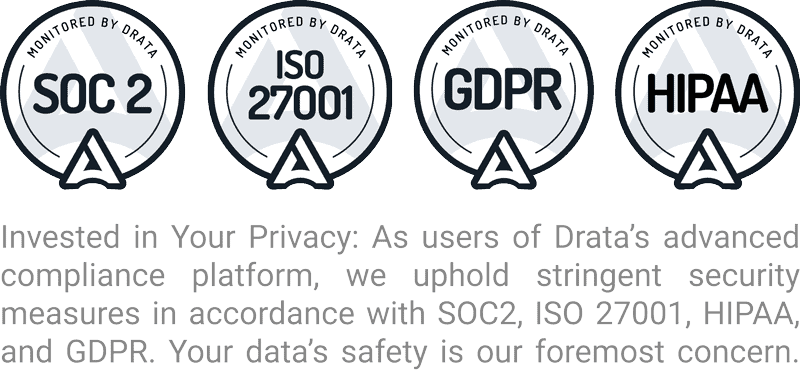Sales and Marketing Alignment
 The CMO Council sited 38% of Chief Marketing Officers (CMOs) say sales and marketing alignment and integration is a top priority. However, only 30% have a clear process or program to do something about it. With only 38% of CMOs making alignment a top priority, we can assume approximately 1 out of every 3 organizations recognize the issue but few take action. How about the other 2 out of 3? Are they not aware of the problems between sales and marketing? This article highlights common problems prohibiting sales and marketing collaboration, summarizes reasons one group thinks the other is the antagonist, and suggests solutions to narrow the divide between sales and marketing.
The CMO Council sited 38% of Chief Marketing Officers (CMOs) say sales and marketing alignment and integration is a top priority. However, only 30% have a clear process or program to do something about it. With only 38% of CMOs making alignment a top priority, we can assume approximately 1 out of every 3 organizations recognize the issue but few take action. How about the other 2 out of 3? Are they not aware of the problems between sales and marketing? This article highlights common problems prohibiting sales and marketing collaboration, summarizes reasons one group thinks the other is the antagonist, and suggests solutions to narrow the divide between sales and marketing.
Unfortunately, inadequate solutions and uninformed executives have only perpetuated the problem. Sales and marketers have developed a terrible misconception of one another culminating in an environment filled with friction and dissonance. Brian Carroll, CEO of InTouch, attests that “communication breakdown affects nine out of ten companies”. Here’s another one of our favorite quotes from Brian:
“The unrealized potential [of sales and marketing alignment] can be likened to the batteries in a flashlight. If the batteries aren’t inserted in the right direction, or are otherwise out of proper contact, their power is unusable”. – Brian Carroll, http://blog.startwithalead.com
Do any of these examples typify your sales and marketing groups?
- marketing complains sales never follows up on their leads
- sales complains marketing never provides any leads, just contacts
- marketing thinks they are the only people who are strategic thinkers
- sales thinks they’re the only people worried about the quarter
- sales wonders why they always have to generate all their own leads
- marketing complains sales criticizes or ignores everything they generate
- marketing thinks salespeople will say anything to get a deal
- marketing wonders why sales isn’t cranking out deals from all their leads
Problems with sales and marketing alignment
C-level executives must recognize problems standing in the way of sales and marketing alignment. We took an opportunity to pull together five major problems impeding sales and marketing collaboration. Each problem is backed by data from industry experts.
80% of leads are typically lost, ignored or discarded (*1)
73% of companies have no process for revisiting leads (*2)
80% of marketers send unqualified leads on to sales (*3)
90% of marketing deliverables are not used by sales (*4)
90% of website visitors don’t identify themselves (*5)
30% of sales reps turnover each year, 7 months to ramp up (*6)
Solutions to sales and marketing alignment
There’s no single recipe for aligning sales and marketing; however, the first step is recognizing they’re not aligned (you already have a 38% chance). Here are some suggestions to align sales and marketing teams which will address the five major problems identified above.
1. Transform your sales cycle into an integrated revenue cycle. Create a new model (definition) for your sales pipeline to include sales, marketing, services and support. We discussed how businesses can split their sales pipeline into a marketing and sales pipeline respectively in this article. Once the sale is made, even more collaboration should occur between sales and marketing while pulling in support and services. We discuss extending your pipeline past the point of “customer” in this article. Working on a revenue cycle vs. a sales cycle allows sales and marketing teams to work together on a common goal; creating revenue, faster.
2. Define a Service Level Agreement (SLA) between marketing and sales. Include things like definitions/terminology, what makes a qualified lead, priority of lead sources, how leads are “recycled” into nurturing programs, where marketing collateral is stored and details of nurturing programs in your SLA.
3. Establish a closed loop reporting process for leads. Once marketing provides a lead to sales it’s crucial follow up is measured and tracked. Marketing automation uses lead distribution technology to disseminate leads based on pre-defined criteria. Automatic lead distribution reduces turnaround time and make sales happier when marketing responds quickly. Additionally, marketing automation technology can automatically schedule follow up actions. For example, scheduling tasks such as a phone call or email in a CRM system such as Salesforce.com. Advanced marketing automation schemes include the ability to ensure tasks are changed or closed; if not, the system will send an email to the marketer or management notifying them of the delay.
4. Foster a culture of respect and trust. To overcome common misconceptions, as highlighted above, foster an environment of collaboration, open communication, and mutual interest to develop respect and trust between marketing and sales.
5. Implement lead scoring. Lead scoring measures a lead’s interaction with marketing activities. It’s an automatic way for marketing to qualify leads for sales. When a lead is qualified by hitting or exceeding a certain scoring threshold, marketing can hand the lead off to sales. The hand-off occurs automatically and unobtrusively. Check out our lead scoring solutions guide for more information.
6. Implement lead tracking. For the 90%+ website visitors who don’t fill out a form, lead tracking captures the visitor’s information as well as their click pattern (digital behavior) as they traverse your site. This is invaluable information for sales. It helps sales better understand what their prospect is interested in. When sales communicates with the prospect they’ll know what they’re looking for resulting in a more efficient discussion. If lead tracking is not implemented sales loses out on more leads and marketing doesn’t get the proper return on their marketing investments.
7. Implement closed-loop email marketing. Typically, marketing will collect a bunch of leads from a trade show, send out an email blast, then hope for someone to call back. With closed-loop email marketing, any response to an email message is automatically signaled to sales or scored appropriately. The marketing system will “raise its hand” when prospects are interested. Closed-loop email marketing is built into most marketing automation solutions.
8. Implement lead nurturing. Don’t let 90% of your marketing collateral (major marketing investments) go to waste. Lead nurturing leverages closed-loop email marketing and enables marketers to setup customized nurturing schedules of 1, 3, 6, 9, 12, or any number of months to automate and personalize the process of staying in touch with your leads. With marketing collateral in hand, a nurturing program, and closed-loop email marketing you can automate periodic follow up. The nurturing system will automatically send email messages with attached collateral matching your prospects interest. Nurturing matures the prospects interest until they’re ready to buy. Lead nurturing also makes sure that the 80% of ignored leads are not ignored since marketers can drop them into a lead nurturing cycle right away. For the 73% of marketers that don’t plan to revisit/re-qualify leads, work with sales to establish a process wherein leads are “recycled” or added back into the nurturing program if the purchase period is farther out than the sales person is ready for.
9. Overlap payment metrics between sales and marketing. Sales people make most of their money off of bookings or revenue. Measure part of marketing’s success on similar sales metrics.
10. Bring in revenue generation software. Get your organization on a common tool set that provides lead generation, marketing automation and sales prospecting capabilities tied into your CRM system. Using a platform solution, not a single product, provides cost savings across the org while uniting your teams.
What happens when sales and marketing are aligned?
As evidenced by the data below, once sales and marketing are aligned the business will recognize considerable monetary as well as cultural gains. Your organization will begin to think as a team, as a single unit, instead of operating in individual silos with disparate agendas. Industry experts report the following benefits of aligning sales and marketing:
Businesses grow 5.4% faster (*7)
Reps close 38% more deals (*7)
Reps lose 36% less deals to the competition (*7)
Businesses have a better chance of retaining customers
We welcome your feedback, comments and suggestions. What do you feel the problems are between sales and marketing? What solutions do you have to achieve sales and marketing alignment?
To be alerted of future posts, please click on the RSS button.
Sources:
(*1, *2) “Gauging the Cost of What’s Lost” by the Business Performance Management Forum and CMO Council.
(*3) Marketing Sherpa’s 2011 B2B Marketing Benchmark Report.
(*4, *6) “The New Rules of Sales Enablement” by Jeff Ernst.
(*5) Marketing Sherpa.
(*7) Hugh Macfarlane, founder and CEO of MathMarketing, conducted an alignment benchmarking study by surveying 1,400 professionals in 84 countries around the world.




